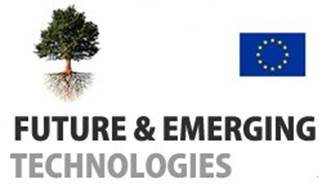Our research is based on superconducting electrical circuits and Josephson junctions, which are used to realize a circuit quantum electrodynamics (cQED) system. These circuits are build out of superconducting metallic structures fabricated by electron beam lithography and are operated inside a dilution refrigerator at 10 mK. The ability to design the level structure of these artificial atoms by changing the layout of the samples allows us to engineer their properties and couple them to electrical resonators.
We divide our research activities in three main projects.
Analog Quantum Simulation using Superconducting qubits

grant agreement n° 714235
The remarkable progress in experimental physics in the last decade has enabled scientists to manipulate, control and detect the state of various quantum systems to a high degree. These efforts were in part motivated by quantum information processing applications (QIP) – where the goal is to build a quantum computer - and the desire to understand the interactions in many-body systems on a fundamental level. This research, and the necessary development of new tools, has already led to applications relying on quantum systems such as: the enhancement of state detection via entanglement in a frequency standard, the use of qubits for quantum repeaters, secure quantum enhanced communication protocols and tests of quantum theory in multi-qubit systems.
Yet, the realization of a universal quantum computer has proven to be a very demanding goal for experiments. As a consequence the focus has shifted to using controllable quantum systems to investigate specific quantum phenomena. The idea is to build a device that mimics a quantum system whose dynamics is either very hard to or cannot be simulated in a relevant timescale with a classical computer. Compared to a universal quantum computer such a device could be much easier to realize and less prone to errors, as one is typically not interested in a faithful representation of the full many-body wave function.
One of the most intensively studied system in the context of quantum simulation are interacting spins which can be used as a model to describe a wide range of quantum systems. While there has been a steady progress in simulating the physics of 1D spin chains, extending these remarkable experiments beyond the one dimensional chain is still an open experimental challenge. In particular, the precise control over the state dynamics and access to the relevant observables required to study quantum phenomena in detail remains particularly difficult.
Read more …Analog Quantum Simulation using Superconducting qubits
Superconducting Quantum Micromechanics


Coupling mechanical systems to electromagnetic fields and circuits got more and more attention since the question arose in the context of gravitational wave detection in the 1970s. Today, mechanical hybrid systems are omnipresent, e.g. as acceleration sensors in cellphones, cars and more. However, by harnessing quantum effects the sensitivity of these devices can be vastly increased, offering new possibilities for compact ultra-sensitive sensors. Furthermore, micromechanical systems in the quantum regime enable new applications in quantum optics and quantum information, such as highly efficient optical to microwave converters, single photon sources/detectors for microwaves or long lived quantum memory. On a more fundamental aspect, a macroscopic micromechanical system in the quantum regime would also allow investigating open questions concerning the classical to quantum transition and the interplay between gravity and quantum physics.
Josephson Junction Arrays
At the hearth of superconducting circuits, the Josephson junction provides the required non-linearity to enable quantum mechanical effects. Beyond its use for quantum applications, Josephson junctions also allow for the study of light matter interactions in a more general setting. Motivated by the growing demand for devices operating at the quantum limit, important efforts have been made to utilize Josephson junctions to control large fields much like electronic transistors, or to provide quantum limited amplifiers. In this context, Josephson Junction Arrays (JJAs) exhibit large non-linearities that enables pronounced bistability at the single photon level. Concretely, the cross and self-Kerr interactions of the JJA allow for the strong dependence of a given mode of the array to the photon number in other modes.

